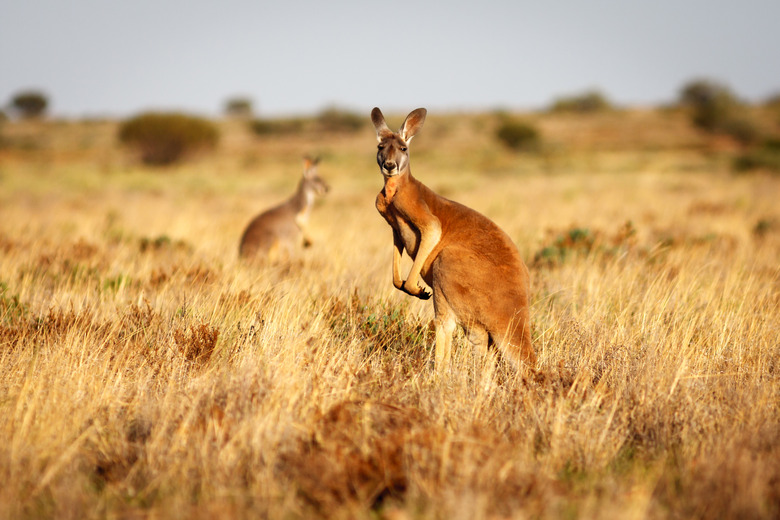What Is A Semi-Arid Climate?
Regions with semi-arid climates represent the second driest climates in the world after deserts, known for their dry, arid climates. Semi-arid climates typically receive up to twice the amount of rain than desert regions do — up to 20 inches per year. Semi-arid climates break down into two distinct classifications: hot and cold. Semi-arid climates are also known as steppe climates.
TL;DR (Too Long; Didn't Read)
Semi-arid climates include regions like the sagebrush areas of Utah, Montana and Great Basin. They also include areas in Newfoundland, Russia, Europe, Greenland and northern Asia. Semi-arid regions receive more rain, up to 20 inches per year at most, than arid deserts, which receive less than 10 inches per year. Like desert regions, the plants and animals of semi-arid regions have adapted to survive with so little rain.
Small Shrubs, Trees and Plants
Small Shrubs, Trees and Plants
Semi-arid regions usually can't support forests or large vegetation because of limited precipitation. Small plants, usually grasses, shrubs and small trees dominate the landscape of semi-arid regions. Certain plants in semi-arid regions may have some of the same adaptations as desert plants, such as thorny branches or waxy cuticles to reduce evaporation and water loss through their leaves.
Adaptive Animals
Adaptive Animals
The animals in a semi-arid region are usually those which are adapted to grassland ecosystems. This usually means large ungulates or herd animals such as:
- bison
- antelope
- gazelle
- zebra
- so on
Predators such as wolves, lions, jackals or coyotes are also found in these regions, depending on the continent in question and whether the area is sub-tropical or temperate.
Hot and Cold Semi-Arid Climates
Hot and Cold Semi-Arid Climates
Hot semi-arid climates are found in the tropic or sub-tropics, often on the fringe of sub-tropical deserts. They have very hot summers and mild or warm winters. Cold semi-arid regions are usually found in temperate zones and are more likely to occur inland, away from large bodies of water. Summers are usually hot and dry, and winters are often cold enough for snow.
Where in the World
Where in the World
Hot semi-arid climates are found in much of the Australian outback, as well as parts of southern Africa, and a large area of land on the southern edge of the Sahara Desert. Cold semi-arid climates include the Great Plains of North America, as well as large areas of Mongolia and Kazakhstan. Many semi-arid regions consist of grassland areas, like the Great Plains, while others include plants with glossy leaves. Animals that live in semi-arid regions includes many of the same animals of the desert: snakes, rabbits, lizards and kangaroo rats.
Cite This Article
MLA
Moll, Eric. "What Is A Semi-Arid Climate?" sciencing.com, https://www.sciencing.com/semiarid-climate-10009421/. 30 April 2018.
APA
Moll, Eric. (2018, April 30). What Is A Semi-Arid Climate?. sciencing.com. Retrieved from https://www.sciencing.com/semiarid-climate-10009421/
Chicago
Moll, Eric. What Is A Semi-Arid Climate? last modified March 24, 2022. https://www.sciencing.com/semiarid-climate-10009421/
